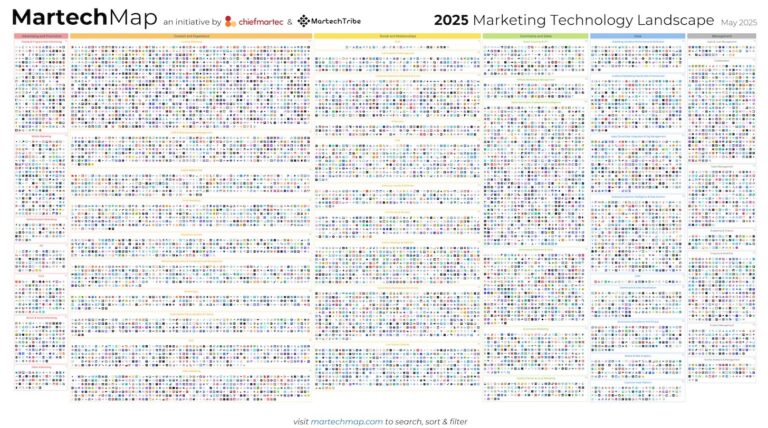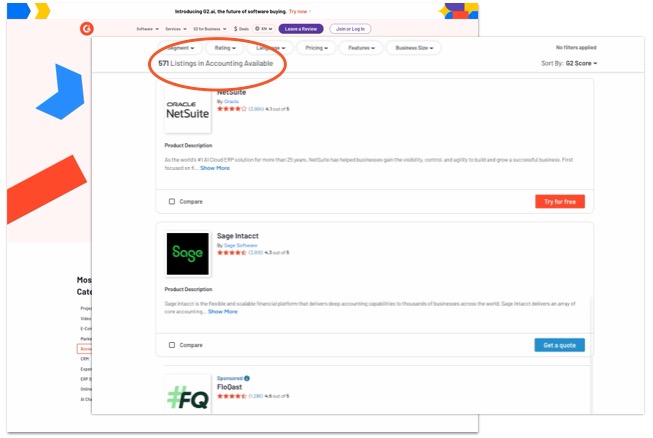Most companies are being lazy about competitive differentiation, and it's costing them deals.
While you're obsessing over what the competition is launching and spending hours building comparison charts, you're completely missing the goldmine of competitive insights sitting right there with your existing customers.
The crazy part? Your customers already told you exactly what your real competitive differentiators are. You're just not listening.
The Overwhelming Reality of Modern Competition
If you're in SaaS or tech, you know exactly what strikes fear into your heart: the Martech technology map.
This year's version shows over 15,300 solutions - 9% bigger than last year. That's what your prospects are staring at when they're trying to choose a solution.
And if they drill down using something like G2 to narrow their options? They find pages and pages of solutions that all sound exactly the same. Everyone's got "best-in-class this" and "industry-leading that."
Your prospects are drowning in overwhelm, and your current competitive differentiation strategy is adding to the noise instead of cutting through it.
When you're competing against industry leaders with massive brand recognition, your traditional approach to competitive differentiation isn't enough. You need competitive differentiators that actually matter to decision-makers.
The Comparison Chart Trap Is Killing Your Competitive Differentiation
What once started as a cheat sheet for marketers has turned into the company diss track - and it's destroying any hope of meaningful competitive differentiation. It's the marketing equivalent of a rap battle, except way less entertaining and infinitely more boring for your prospects.
You're basically creating a public roast of your competitors while simultaneously training your prospects to shop on features and price. This approach to competitive differentiation is backwards. You're asking prospects to take on the burden of verifying your claims because you know the competition has their own spin to make themselves look like the heroes.
Take QuickBooks, for example. They literally call out FreshBooks by name and build an entire comparison page around it. Look at all the work that went into this competitive differentiation effort - time, energy, budget, countless meetings. And what did they accomplish? They taught their prospects to focus on features and made the buying decision about checking boxes instead of solving actual problems.
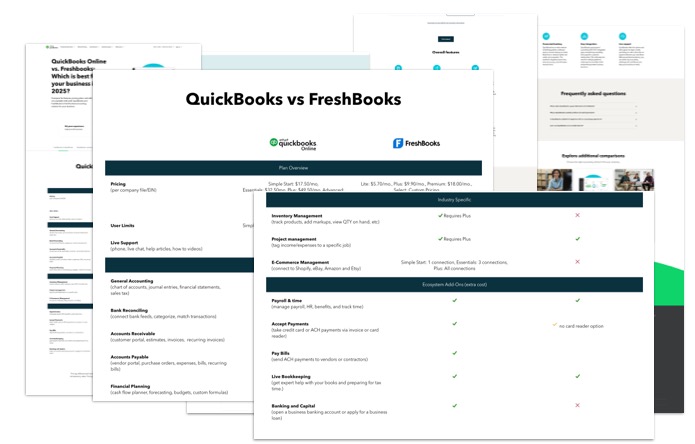
Of course, FreshBooks fired back with their own equivalent landing page, with just as much investment in their competitive differentiation strategy.
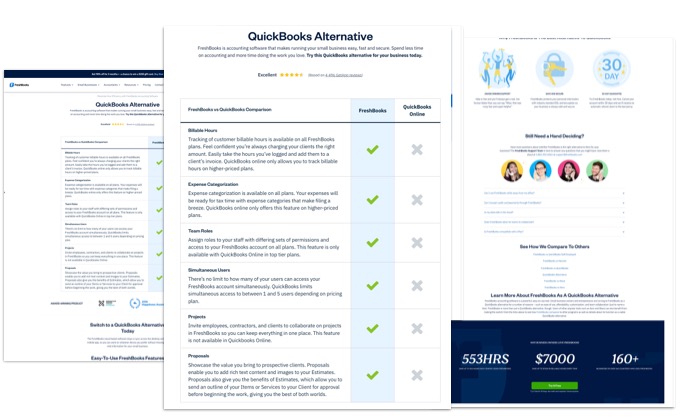
Now both competitors are asking prospects to compare and contrast what one company claims versus another - literally asking them to do more work in a battle of "trust me."
The Real Problem with Feature-Based Competitive Differentiators
Here's what's really happening: comparison charts seem like they're establishing competitive differentiation, but they're actually a lazy crutch. They let you avoid the hard work of understanding what your customers actually value as competitive differentiators.
You can't see behind the curtain of your competition. You don't know your competitors' churn rate, what their customer success team looks like, how much technical debt they're carrying, or what their customers really think about them. Without seeing the whole picture, your competitive differentiation strategy focuses on surface-level stuff while ignoring the deep value that actually drives decisions.
This is why most competitive differentiation strategies fail - they're built on assumptions about what matters instead of customer insights about what actually drives buying decisions.
Companies with Unbeatable Competitive Differentiators
Let's look at Chewy. They don't compete on pet food features or shipping speed. Their competitive differentiation strategy centers on something you can't build in a sprint: genuine care for customers and their pets.
Their customers are advocates for the brand, and this becomes their most powerful competitive differentiator. You'll see posts about Chewy refunding unused pet food after a customer's pet passes away and telling them to donate it to a local shelter. If your pet has allergies, just donate the food, and they'll refund you. They even send flowers when customers lose a pet.
Chewy's competitive differentiation works because they're supporting customers when they don't have to. That pet isn't going to generate more revenue, but Chewy showed up anyway. These are competitive differentiators that the competition struggles to copy because they're rooted in company values, not features.
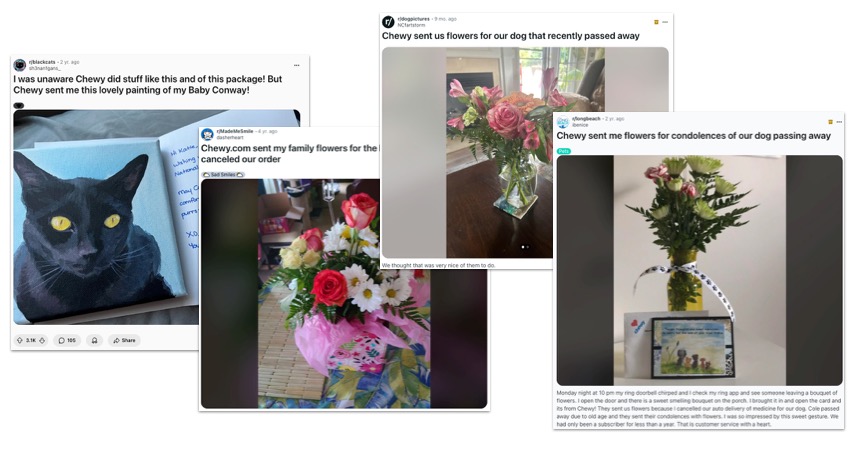
Another example is 1-800 Contacts. Their competitive differentiation strategy uses personality and humor to separate themselves from places like Costco or your ophthalmologist's office. They know choosing them instead of getting contacts from your doctor is more of a hassle, but people choose them for the ease of doing business, customer support, and feeling appreciated like a human.
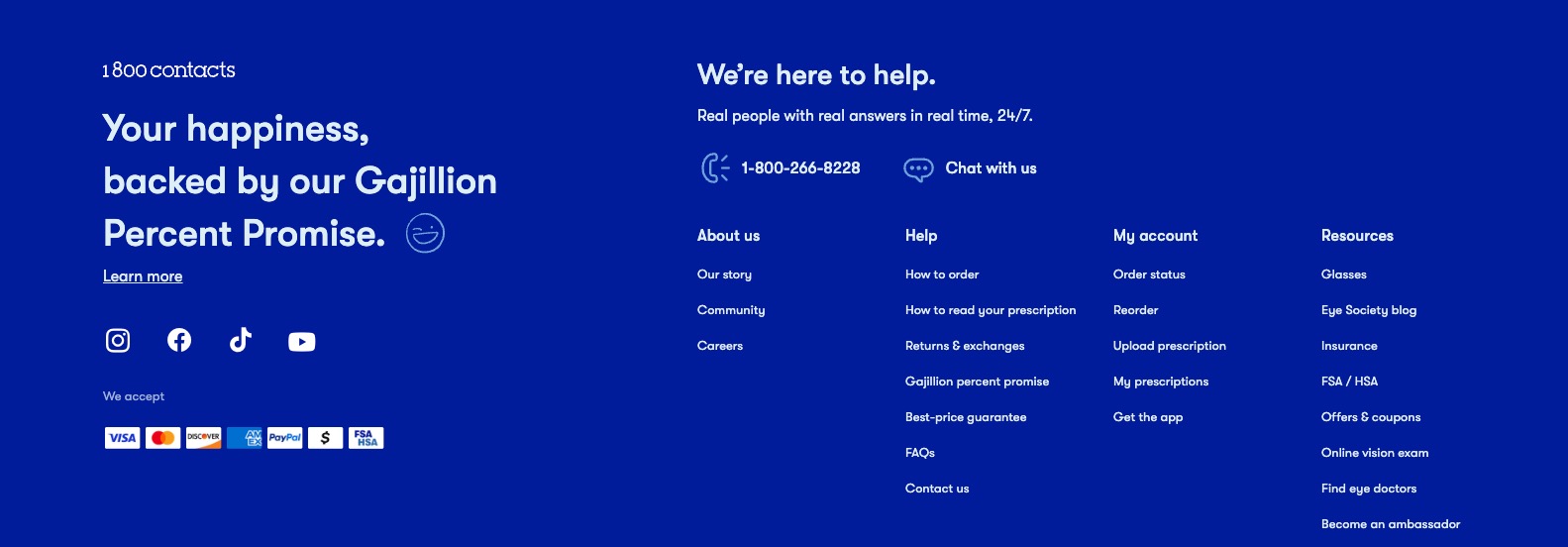
Why Values-Based Competitive Differentiators Win Every Time
When we talk about sustainable competitive differentiation, values beat features every single time. Features are what you build. Values are what you deliver. This is the foundation of competitive differentiators that actually last.
Your competitors can copy your features in the next sprint, but they can't copy 20 years of caring about pet owners or revolutionizing how people buy contact lenses online. Chewy's competitive differentiators aren't about having better pet food. 1-800 Contacts isn't winning because they invented contact lenses.
They're both creating competitive moats because their competitive differentiation strategy aligns their values with the values that matter to their customers - values that show up in every interaction, every touchpoint, even small moments like website footer copy.
Features get you into the consideration set. Values-based competitive differentiators get you the deal.
How to Discover Your Real Competitive Differentiators
You need to stop looking at the competition and start mining what you already have. Your competitive differentiation strategy should be built on customer insights, not competitor analysis.
- Talk to your customers about their buying process - not just why they love your product, but specifically why they chose you over the alternatives they considered. This is where your real competitive differentiators live.
- Dig through customer support tickets for the language customers use when they talk about value. Listen to social conversations from existing customers - everyone wants to be authentic on social, so it's a great way to get to their real opinions about what makes you different from the competition.
- Then apply themes to what comes up repeatedly, count frequency by customer segment, and use that customer language to articulate your competitive differentiators in your copy, positioning, and product roadmap discussions.
Here are examples of real competitive differentiators that have nothing to do with features your competition can copy:
- Actual humans are available for support instead of unhelpful AI-driven chatbots
- Continued education that makes customers smarter overall
- Customers willing to give referrals and put their social capital on the line
- A sales process that's helpful instead of pushy
- Quick response times when problems arise
None of these show up in feature comparison charts, but they all drive buying decisions and serve as powerful competitive differentiators that alleviate anxiety around making a bad choice.
The Price Reality in Competitive Differentiation
Yes, price will come up when you're researching competitive differentiators. But price is usually just a clever mask for "I don't see enough value" or "I don't trust I'll get value for the price."
People will pay what you ask, within reason, if you deliver value that genuinely changes their lives or businesses. Price might be part of the initial winnowing process, but strong competitive differentiators make it rarely the final deciding factor.
Don't default to price-based competitive differentiation when you haven't done the work to understand your real value and why customers chose your solution over the competition. The more value you deliver through meaningful competitive differentiators, the less price becomes a hurdle.
Building a Competitive Differentiation Strategy That Works
Your competitive differentiation strategy should align your values with the values your best-fit customers hold and tell you they have. This is how you create competitive differentiators that form a real competitive moat.
Your customers have already handed you the roadmap to effective competitive differentiation. Stop taking shortcuts with comparison charts, feature lists, and even ChatGPT to source ideas for competitive differentiators. These approaches keep you trapped in that sea of same.
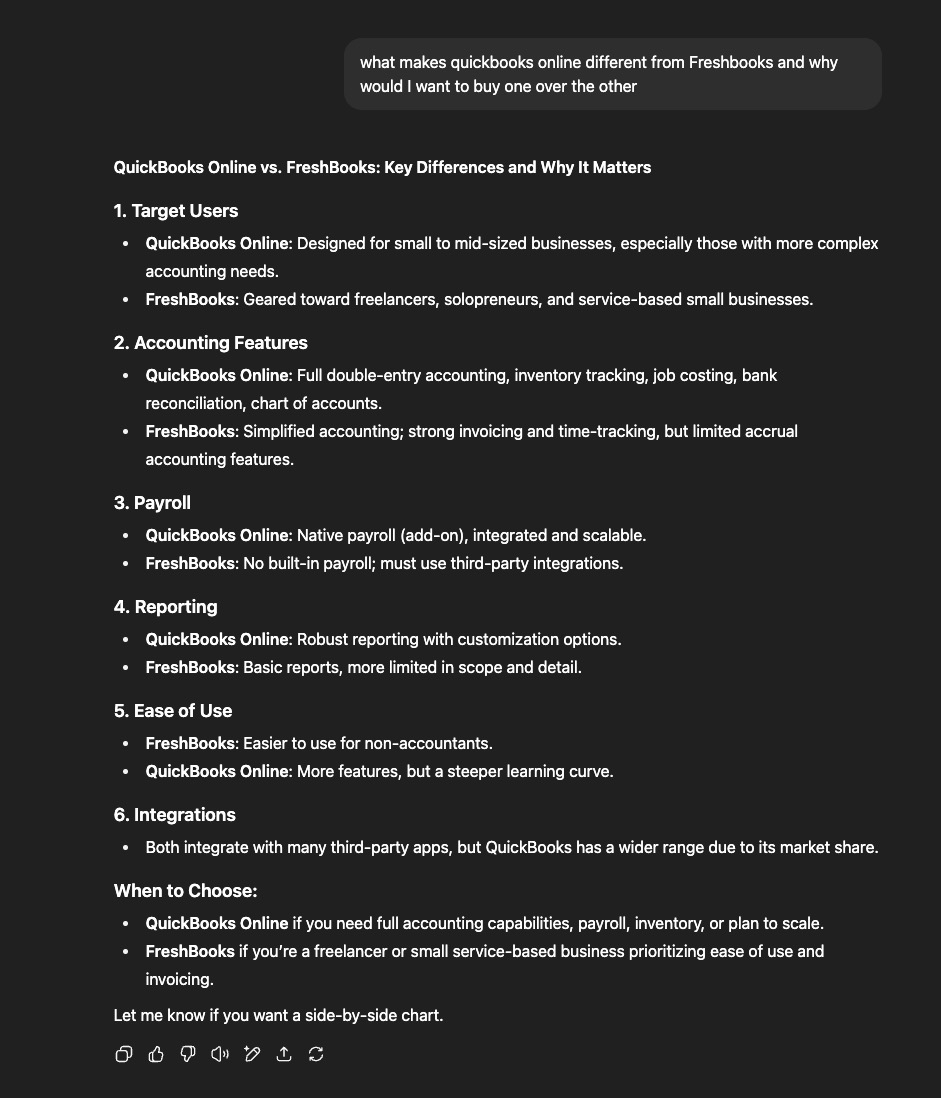
Stop being lazy about the most important strategic work you can do. Start listening to what your paying customers are already telling you about what sets you apart from the competition.
Your real competitive differentiators aren't hiding in your product roadmap or in competitive analysis of what the competition is doing. They're sitting with your customers, waiting for you to build a competitive differentiation strategy around what actually matters to them.
Companies winning today have competitive differentiators their competition can't copy because they're rooted in customer insights, company values, and genuine care, not features that can be built in the next sprint.
Stop Drowning in Sameness - Uncover Your Real Competitive Differentiators
If your competitive differentiation strategy is making you sound like everyone else, it's time to dig deeper. Your customers already told you what makes you different - you just need the right process to extract those insights.
The Customer Growth Sprint is a 4-week intensive to uncover your customers' actual buying criteria and competitive differentiators. No more guessing. No more feature wars. Just real insights you can implement starting today.
Stop competing on features and start winning on what matters most to your customers.
Your real competitive advantage isn't what you think makes you different - it's what your customers say makes you irreplaceable.

